Bottleneck Calculator, PC bottleneck calculator,
Your Ultimate Guide to Understanding and Using It
PC Bottleneck Calculator
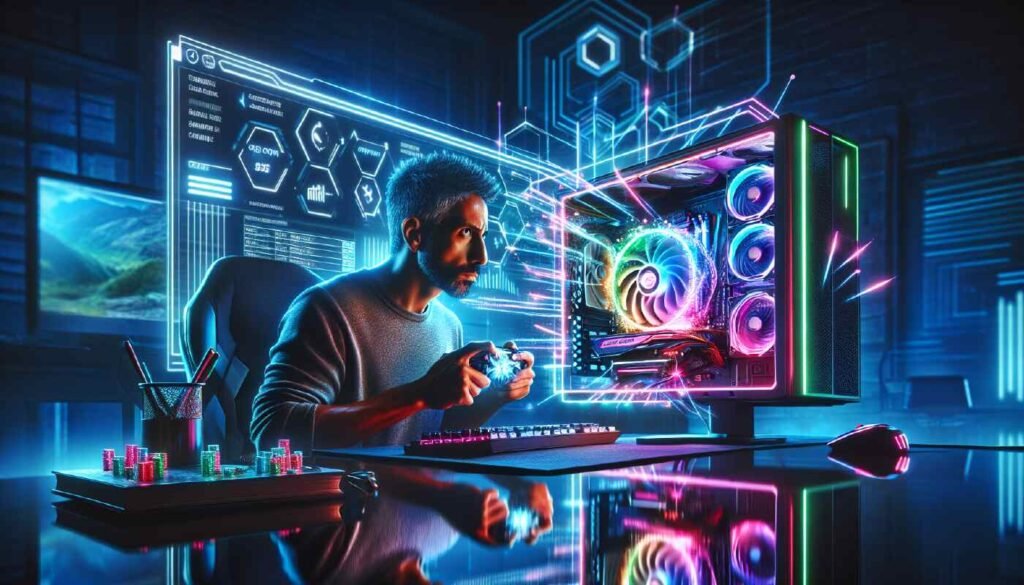
Understanding the concept of a Bottleneck Calculator. bottleneck in computer systems is crucial for optimizing performance. A bottleneck occurs when one component restricts the entire system’s efficiency, making awareness and analysis of these limitations key for any PC user looking to enhance their computer’s capabilities. Bottleneck calculators, although not perfectly accurate, serve as a valuable tool in this analytical process by estimating the compatibility and balance of a computer’s components.
These online tools examine specifications across various PC parts to determine how well they harmonize, providing insights into potential performance restrictions. This guide will delve into how to use an online bottleneck calculator effectively, including interpreting its results to make informed decisions about upgrading or balancing your PC system for optimal performance.
Understanding Bottleneck in PC Systems
Bottleneck calculators serve as an essential tool in identifying compatibility and performance issues within PC systems by analyzing key components. These calculators focus on the following areas:

- Processor (CPU): The brain of the computer, responsible for executing instructions. A CPU bottleneck can occur if the processor is not fast enough to keep up with the demands of other components, especially during intensive tasks like gaming or video editing.
- Graphics Card (GPU): Critical for rendering images and video. GPU bottlenecks are common when the graphics card is unable to process data as quickly as the CPU can supply it, leading to underutilization and decreased performance in graphics-intensive applications.
- Screen Resolution: Higher resolutions require more processing power from both the CPU and GPU. Bottleneck calculators assess whether the current setup can handle specific resolutions efficiently without causing a performance drop.
These calculators compare the performance capabilities of these components to determine how well they work together. However, it’s important to note that while bottleneck calculators provide valuable insights, they are not completely accurate due to factors like software optimization, thermal throttling, and manufacturing variances. The results can also vary over time with updates in software or drivers, highlighting the need for continuous monitoring and adjustment.
Bottlenecks in PC systems can manifest in various ways, affecting different components depending on the software being used. Common scenarios include:
- CPU Bottlenecks: Occur when the processor cannot keep up with the GPU, often resulting in lower frame rates than the graphics card is capable of producing. This is typically due to insufficient clock speed or low core count.
- GPU Bottlenecks: Arise from older graphics card architecture or insufficient graphics memory, limiting the rendering capabilities and overall system performance.
- RAM Bottlenecks: Happen when there is not enough memory to handle the data being processed, causing slowdowns and decreased performance.
To prevent these issues, ensuring that all components are compatible and up-to-date is crucial. Regular system monitoring, updating drivers, and upgrading key components like the CPU, GPU, and RAM can significantly reduce the likelihood of experiencing bottlenecks. Identifying the source of a bottleneck is the first step toward optimizing a PC’s performance, with tools like task manager reports and applications such as MSI Afterburner providing valuable insights into system utilization and potential bottlenecks.
Key Components Analyzed by a Bottleneck Calculator
To prevent these issues, ensuring that all components are compatible and up-to-date is crucial. Regular system monitoring, updating drivers, and upgrading key components like the CPU, GPU, and RAM can significantly reduce the likelihood of experiencing bottlenecks. Identifying the source of a bottleneck is the first step toward optimizing a PC’s performance, with tools like task manager reports and applications such as MSI Afterburner providing valuable insights into system utilization and potential bottlenecks.

The bottleneck calculator meticulously analyzes several key components to determine the compatibility and performance efficiency between them. Here’s a breakdown of these components and how they contribute to the overall system performance:
CPU and GPU Utilization Ratios: Central to the analysis is the workload distribution between the CPU and GPU, especially in modern games where graphics processing plays a significant role in rendering high-quality visuals and complex 3D environments .
- CPU (Central Processing Unit): Acts as the brain of the computer, executing instructions and processing data. A powerful CPU ensures smooth performance, especially in CPU-intensive tasks like simulations or complex calculations.
- GPU (Graphics Processing Unit): Essential for rendering images, video, and animations. It’s particularly crucial for gaming, video editing, and other graphics-intensive applications.
Memory and Resolution Considerations:
- RAM (Random Access Memory): Influences performance through frequency and timings, affecting how quickly the CPU can access data.
- Screen Resolution: Plays a role in determining how much graphical processing power is required. Higher resolutions increase the demand on both the CPU and GPU.
Advanced Settings and Features:
- Game Engine and Settings: The efficiency of the game engine and in-game settings can significantly impact performance. Higher graphical settings increase the load on the GPU.
- Ray Tracing: A rendering technique that simulates the physical behavior of light. While it enhances visual fidelity, it requires substantial GPU resources.
The bottleneck calculator also considers popular combinations of processors and graphics cards to provide more accurate bottleneck predictions. Some notable combinations include:
- GeForce RTX 4060 & Ryzen 7 7800X3D
- GeForce RTX 3060 & Core i5-13400F
- Radeon RX 6600 & Ryzen 5 5600X
- GeForce RTX 4090 & Ryzen Threadripper PRO 7995WX.
Users can input their system specifications, including processor, graphic card, purpose, and screen resolution, on platforms like dbcalculator.com. This allows for a tailored analysis of potential bottlenecks, taking into account the unique configurations of individual systems.
How to Use A Bottleneck Calculator

To effectively utilize an online bottleneck calculator and gain insights into your PC’s performance, follow these steps:
-
Input Your Core Components:
- Processor and Graphics Card: Begin by entering the details of your processor (CPU) and graphics card (GPU) into the calculator. These are crucial for the analysis as they significantly impact your system’s performance.
- Select Task Type: For gaming PCs, it’s important to choose “graphics card intense task” from the available options. This ensures the calculator accurately assesses the demands of gaming on your system.
-
Choose Your Resolution:
- Whether you’re gaming at 1080P, 1440p, or 4K, selecting the correct resolution is essential. This influences how the bottleneck calculator evaluates your system’s ability to handle different graphical loads.
-
Interpreting the Results:
- 0% Bottleneck: If the calculator shows a 0% bottleneck, your system is well-balanced for your chosen tasks and resolutions. No further action or research is typically needed in this case.
- 5% to 10% Bottleneck: A bottleneck within this range suggests minor compatibility issues. It’s advisable to conduct further research, such as looking up benchmarks on YouTube that feature your specific CPU and GPU combination.
- Over 10% Bottleneck: A result indicating more than a 10% bottleneck is a strong indication that component upgrades could significantly improve your system’s performance. Consider different components that could better match your system’s needs.
Remember, while bottleneck calculators like PC Builds Bottleneck Calculator and The Bottlenecker provide valuable insights, they may not always be 100% accurate due to various factors including software optimizations and hardware variations. It’s recommended to use these tools as a starting point for understanding potential bottlenecks and to conduct manual testing or further research before making any final decisions on hardware upgrades.
Interpreting the Results of Bottleneck Calculation
Interpreting the results from an online bottleneck calculator provides insights into your system’s performance and compatibility. Here’s how to understand the outcomes:
-
0% Bottleneck:
- Meaning: Your CPU and GPU are well-matched, offering balanced performance for your tasks.
- Action: Generally, no further upgrades or changes are required unless future software or games demand more power.
-
5% to 10% Bottleneck:
- Meaning: Indicates a slight imbalance between your components, which might not be optimal but is often not noticeable in everyday use.
- Action: Consider researching further, such as looking at real-world performance tests or benchmarks for your specific component combination. Minor adjustments or settings changes in software or games might improve performance without needing hardware upgrades.
-
Over 10% Bottleneck:
- Meaning: A significant mismatch between components, likely causing noticeable performance issues in demanding tasks or games.
- Action: It’s advisable to evaluate which component (CPU or GPU) is the limiting factor and consider upgrading. Use benchmarks and performance tests to guide your decision on which part to upgrade for the best performance improvement.
It’s important to remember that bottleneck calculators provide a general estimate of compatibility and performance limitations. They are not 100% accurate due to the dynamic nature of computer hardware and software interactions. Factors such as software optimizations, driver updates, and specific game or application requirements can influence actual performance. Therefore, use these calculators as a starting point for understanding potential bottlenecks and conduct further research or testing to make informed decisions about upgrades or system configurations.
Common Bottleneck Scenarios and Solutions
In addressing common bottleneck scenarios and their solutions, it’s essential to approach each situation with a tailored resolution strategy. Here are some key scenarios and their recommended actions:
-
CPU Bottleneck:
- Identification: This occurs when the CPU usage is at 100% while GPU usage is significantly lower, around 40% or less, leading to decreased gaming performance, lower frame rates, and reduced responsiveness.
- Solution: Upgrading to a more powerful CPU that matches or exceeds the performance demands of the GPU and other system components. Intel i5 or Ryzen 5 CPUs are often recommended for gaming computers. Reducing the load on the CPU by lowering game resolution and graphical settings can also mitigate the bottleneck.
-
RAM and Storage Bottleneck:
- Identification: Systems with low RAM or slow storage devices (like HDDs) can experience sluggishness, long loading times, and stuttering in applications.
- Solution:
- RAM Upgrade: Increasing the system’s RAM can alleviate bottlenecks, especially in memory-intensive tasks.
- Storage Upgrade: Replacing a slow HDD with a faster SSD can significantly improve system responsiveness and speed up load times.
-
GPU Bottleneck:
- Identification: Manifests as low GPU usage compared to CPU usage, leading to underutilization of the graphics card’s capabilities.
- Solution: Running games at higher settings or resolutions can slow down the GPU, reducing the bottleneck effect. Alternatively, upgrading to a more powerful GPU can ensure smoother performance and better balance with the CPU.
Preventive Measures and Maintenance:
- Regularly clean the PC to maintain good airflow and prevent overheating, which can exacerbate bottlenecks.
- Keep drivers and software up to date to ensure optimal performance and compatibility between components.
- Monitor system performance using tools like Task Manager or third-party software to identify and address bottlenecks promptly.
- Consider the compatibility of new components with existing hardware, especially when upgrading the CPU or GPU, to avoid introducing new bottlenecks.
By understanding these common bottleneck scenarios and implementing the suggested solutions, users can significantly enhance their PC’s performance and gaming experience. Remember, consulting a professional or a knowledgeable friend can provide additional insights and guidance when addressing complex bottleneck issues.
How to Balance Your PC System for Optimal Performance
Balancing your PC system for optimal performance involves several crucial steps, each targeting a specific component to ensure that no part becomes a bottleneck. Here’s a comprehensive approach:
-
Component Selection and Upgrade:
- CPU and GPU: Opt for a CPU and GPU that are closely matched in performance to avoid either being underutilized or becoming a bottleneck. While the i5-9600KF may offer acceptable performance now, its limited number of threads could lead to aging poorly as games and applications become more demanding. Ideally, the CPU and GPU should be closely matched in performance for optimal results.
- RAM: Start with at least 8GB of RAM for basic tasks, and consider upgrading to 16GB or more if you’re using a faster processor and powerful graphics card to prevent memory from becoming a bottleneck.
- Storage: Use an SSD for your operating system and most-used applications or games to reduce load times and prevent storage from becoming a bottleneck. Consider upgrading to an SSD if you’re still using an HDD.
- Display: Ensure your monitor’s refresh rate and resolution are in line with what your GPU can handle. High refresh rates and resolutions demand more from your GPU, so choose a display that matches your system’s capabilities to avoid a display bottleneck.
-
System Optimization:
- Update Drivers and OS: Regularly check for and install updates for your operating system, drivers, and firmware to ensure optimal performance and compatibility.
- Adjust Power Settings: Set your power plan to Ultimate Performance to improve CPU performance, especially for gaming or intensive tasks.
- Monitor Settings: Adjust your monitor settings to match the displayport version and refresh rate to your GPU’s output capabilities. This ensures you’re getting the full benefit of your monitor’s capabilities.
-
Performance Tuning:
- Overclocking: Consider overclocking your CPU and GPU to squeeze out extra performance. This should be done with caution and proper research to avoid overheating or damaging components.
- Startup Programs: Limit the number of programs that run at startup to reduce boot times and improve system responsiveness.
- Clean Up: Regularly clean up temporary and junk files to free up space and resources for better performance.
By following these steps, you can create a balanced PC that delivers optimal performance for gaming or any other intensive tasks. Remember, a balanced PC is one where all components are equipped to handle the workloads efficiently, ensuring no single component is disproportionately over or under-utilized.
Upgrading Your PC Based on Bottleneck Calculator Recommendations
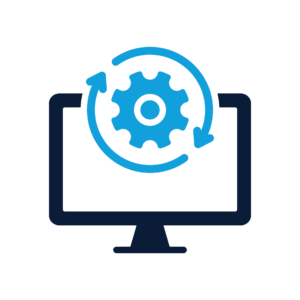
To effectively upgrade your PC based on bottleneck calculator recommendations, follow this structured approach:
Identifying the Need for Upgrade
- Gaming and Intensive Tasks: If you’re aiming for 4K gaming, video editing, streaming, or if your system suffers from insufficient memory or a slow hard drive, an upgrade is highly recommended.
- Current System Evaluation: Assess the current state of your PC. For instance, if it’s equipped with SATA 1, upgrading might not yield significant improvements. However, systems with a 6th Gen I-7 and USB3.0 indicate it’s a favorable time for an upgrade.
Tools and Analysis for Upgrade Decisions
- Bottleneck Detection Tools: Utilize tools like Logical Increments Bottleneck Detection Tool for an in-depth analysis of your system. These tools provide specific component recommendations to address detected bottlenecks.
- Monitoring Software: Use MSI Afterburner to monitor GPU load. A consistent GPU load under 95% indicates a CPU bottleneck, guiding you towards the right upgrade path.
Upgrading Components Based on Recommendations
- CPU and GPU Bottlenecks:
- If a CPU bottleneck is detected, consider upgrading the CPU or shifting to a higher resolution to lessen the load on the CPU.
- For GPU bottlenecks, reducing graphics quality, activating image upscaling features, or lowering the resolution can help. If these measures don’t work, upgrading the GPU is the next step.
- Memory and Storage:
- RAM: Ensure compatibility with your motherboard before upgrading. Starting with an upgrade to 16GB or more can significantly impact performance, especially in memory-intensive tasks.
- Storage: Decide between upgrading to an SSD for faster load times or an HDD for more storage space. An SSD is generally recommended for the operating system and frequently used applications or games.
- Compatibility and Professional Installation: When upgrading any component, whether it’s the CPU, GPU, RAM, or storage, always ensure compatibility with your existing system, particularly the motherboard. Consider seeking professional installation to avoid any mishaps during the upgrade process.
By following these steps and utilizing the recommended tools and strategies, you can effectively upgrade your PC based on bottleneck calculator recommendations, ensuring optimal performance for your specific needs and tasks.
Future-Proofing Your System Against Bottlenecks
Future-proofing your system against bottlenecks involves careful consideration of hardware components to ensure longevity and optimal performance as technology evolves. Here are some strategies to future-proof your system:
Invest in Balanced Components: Choose hardware components that are well-balanced in terms of performance. Avoid pairing extremely powerful components with significantly weaker ones, as this can create bottlenecks. Instead, aim for a balanced configuration where each component complements the others.
Consider Upgrade Paths: Opt for hardware platforms that offer upgradeability. Choose a motherboard with support for future CPU and RAM upgrades, and select a GPU with compatibility for future technologies like PCIe 4.0 or newer.
Prioritize CPU and GPU: The CPU and GPU are often the primary drivers of system performance. Invest in a high-quality CPU and GPU to ensure that your system can handle demanding tasks and applications for years to come.
Focus on Memory: Adequate RAM is crucial for smooth multitasking and gaming performance. Choose a motherboard that supports ample RAM capacity and high-speed memory modules. Consider future memory requirements for upcoming applications and operating systems.
Storage Considerations: Opt for fast and reliable storage solutions such as SSDs (Solid State Drives) or NVMe SSDs. These offer significant performance improvements over traditional HDDs (Hard Disk Drives) and help mitigate bottlenecks, especially in storage-intensive tasks.
Monitor Technological Trends: Stay informed about advancements in hardware technology. Follow industry news, reviews, and discussions to understand upcoming trends and technologies. This knowledge can guide your purchasing decisions and help you anticipate future hardware requirements.
Upgrade Regularly: While it’s essential to future-proof your system initially, periodic upgrades are also necessary to keep pace with evolving technology. Plan for upgrades based on your budget and performance requirements, focusing on components that are most likely to become bottlenecks over time.
Consider Overclocking: Overclocking can provide a performance boost to your system, but it also carries risks and may void warranties. If you’re comfortable with overclocking, it can be a cost-effective way to extend the life of your hardware and mitigate bottlenecks.
Opt for Quality Components: Choose reputable brands and high-quality components that offer reliability and performance. Quality components are less likely to fail prematurely and may offer better long-term support through driver updates and firmware enhancements.
Plan for Future Connectivity: Consider future connectivity standards such as USB 4.0, Thunderbolt, and Wi-Fi 6E. Choosing a motherboard and peripherals with support for these standards can future-proof your system against connectivity bottlenecks.
By following these strategies, you can future-proof your system against bottlenecks and ensure that it remains capable of handling demanding tasks and applications for years to come.
Trusted Bottleneck Calculator
Understanding the Concept of Trusted Bottleneck Calculator in PC Performance. When it comes to maximizing the performance of your PC, understanding the concept of bottlenecking is crucial. In simple terms, a bottleneck occurs when one component of your computer is unable to keep up with the others, thereby limiting the overall performance of your system. Identifying and addressing bottlenecks is essential for achieving optimal performance.
Bottlenecks can occur in various components of your PC, such as the CPU, GPU, RAM, or storage devices. For example, if you have a powerful graphics card but a relatively weak CPU, the CPU becomes the bottleneck, as it cannot process data as quickly as the GPU can render it. This results in a performance limitation and can hinder your overall gaming experience or other resource-intensive tasks.
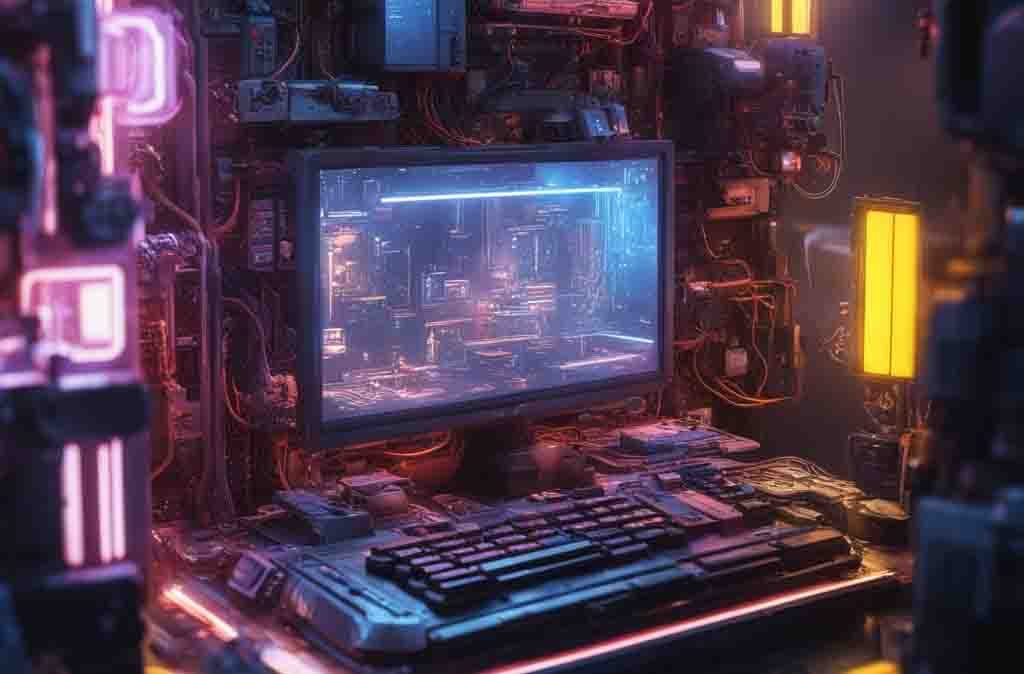
RAM Bottleneck Calculator
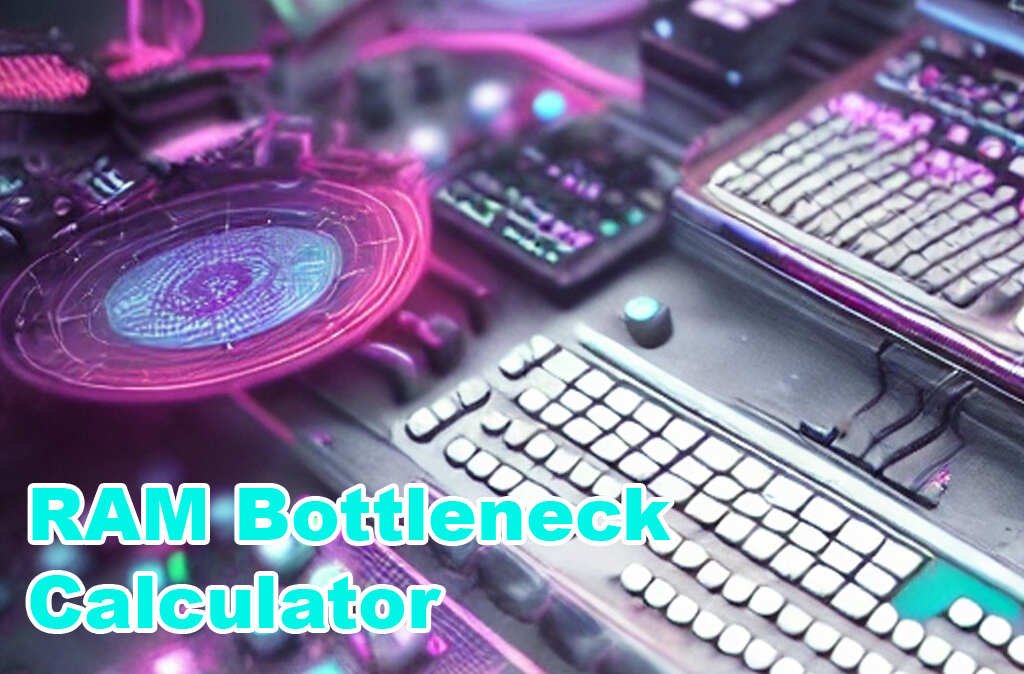
Understanding RAM Bottleneck Calculator. As a tech enthusiast and avid PC user, I have always sought ways to optimize my computer’s performance. One of the most critical components that can significantly impact a PC’s speed and efficiency is the RAM, or Random Access Memory. Understanding the concept of a RAM bottleneck is essential for maximizing your PC’s performance.
RAM bottleneck occurs when the available memory in your computer fails to keep up with the demands of running various applications simultaneously. This leads to a decrease in performance as the system struggles to juggle multiple tasks. It can result in lagging, freezing, and even crashes. To avoid these issues, it is crucial to optimize your RAM performance.
SSD Bottleneck Calculator Maximize Your Storage Full Performance
Introduction to SSD Bottleneck Calculator. As technology continues to advance at a rapid pace, the need for efficient storage solutions becomes increasingly important. Whether you’re a casual computer user or a professional in the field, understanding storage performance and its bottlenecks is crucial. In this article, I will introduce you to the concept of storage performance and how an SSD bottleneck calculator can help you maximize it.
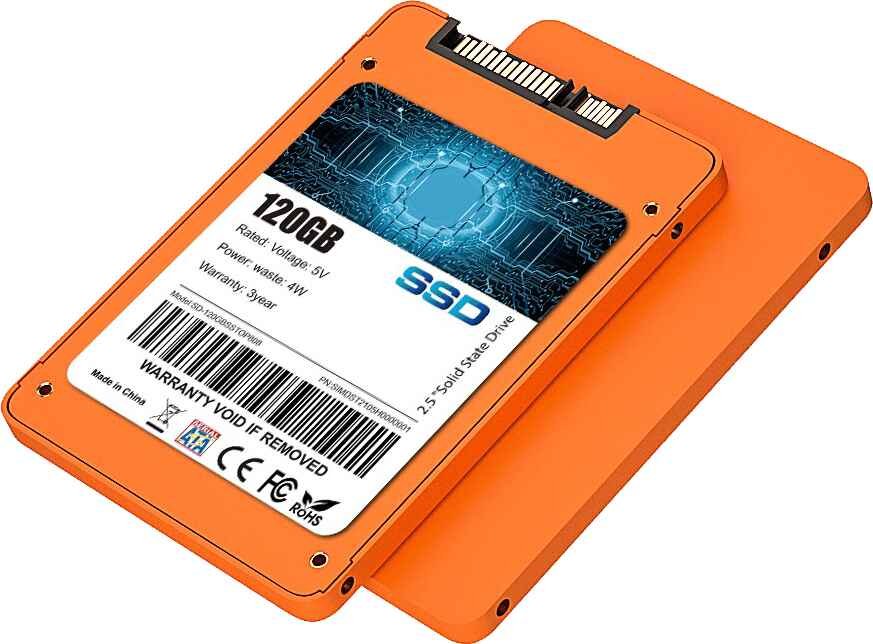
Game Bottleneck Calculator
A bottleneck calculator is a tool used in computer gaming to determine which component in a system is limiting performance, or “bottlenecking” the system’s overall capabilities. This can be particularly useful when upgrading or building a gaming PC to ensure that the components are balanced and that one component isn’t significantly hindering the performance of others.
There are various bottleneck calculators available online, and they typically work by analyzing the specifications of the CPU, GPU, RAM, and sometimes other components, and then providing an estimation of which component might be the bottleneck based on the system’s configuration and the requirements of the games being played.
However, it’s important to note that bottleneck calculators can only provide rough estimates and are not always entirely accurate. They can be a helpful tool in optimizing your system, but it’s essential to take their recommendations with a grain of salt and consider other factors such as real-world performance benchmarks and your specific usage scenarios.
Laptop Bottleneck Calculator

A laptop bottleneck calculator is a tool designed to help users identify performance bottlenecks in their laptops. A bottleneck occurs when one component of a system is unable to keep up with the performance of other components, thus limiting the overall performance of the system.
In the context of laptops, various components such as the CPU (Central Processing Unit), GPU (Graphics Processing Unit), RAM (Random Access Memory), and storage can contribute to overall system performance. If one of these components is significantly slower or less powerful than the others, it can create a bottleneck that hampers the laptop’s performance in certain tasks, such as gaming, video editing, or multitasking.
A laptop bottleneck calculator analyzes the specifications of a user’s laptop, including the CPU, GPU, RAM, and storage, to determine whether any components are causing performance limitations. By identifying these bottlenecks, users can make informed decisions about upgrading or optimizing their laptops to improve overall performance.
The calculator typically provides insights and recommendations based on the user’s laptop specifications, helping them understand which components may need upgrading or optimization to achieve better performance in specific tasks or applications.
Pc Builds Bottleneck Calculator
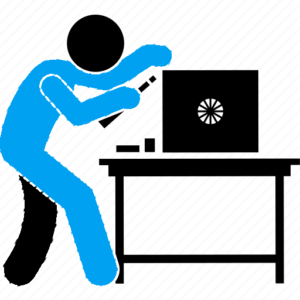
There isn’t a single “bottleneck calculator” that universally applies to all PC builds, as determining bottlenecks can be quite complex and context-dependent. However, there are several tools and resources available online that can help you assess potential bottlenecks in your PC build. Here are a few approaches you can take:
-
Online Calculators: Some websites offer tools where you can input the specifications of your CPU, GPU, RAM, and other components, and they provide an estimation of potential bottlenecks. Examples include PC Builds Bottleneck Calculator and Bottleneck Calculator (by game-debate.com).
-
Benchmarking Software: Running benchmarking software like 3DMark for graphics performance or CPU-Z for CPU performance can give you insights into how your components are performing relative to their expected capabilities.
-
Real-world Testing: Sometimes the best way to identify bottlenecks is through real-world testing. Run demanding games or applications on your system and monitor performance metrics like CPU and GPU usage, frame rates, and temperatures. If one component consistently maxes out while others remain underutilized, it could indicate a bottleneck.
-
Community Forums and Reviews: Forums like Reddit’s /r/buildapc or various tech forums often have users who are experienced in identifying bottlenecks. You can describe your build and usage scenario and ask for advice. Additionally, hardware reviews from reputable sources often discuss potential bottlenecks in specific configurations.
Remember that bottlenecks can vary depending on the specific tasks or games you’re running, so it’s essential to consider your usage scenario when assessing your PC build. Additionally, bottlenecks aren’t always a bad thing; they’re just points where one component limits the performance of another. In some cases, a certain level of bottlenecking might be acceptable depending on your priorities and budget.
FAQ'S
- A bottleneck calculator is a tool used primarily in PC building to assess the potential performance limitations (bottlenecks) within a system. It helps users determine if one component, such as the CPU or GPU, might significantly outperform another, causing reduced overall performance.
Bottleneck calculators typically analyze the specifications of various hardware components in a computer system, such as the CPU, GPU, RAM, and storage devices. They consider factors like clock speed, core count, and memory bandwidth to estimate the relative performance of each component. Based on these assessments, they identify potential bottlenecks that may occur when components are paired together.
Using a bottleneck calculator can help users make informed decisions when selecting hardware components for their systems. By identifying potential bottlenecks, users can ensure that their components are well-balanced, optimizing overall performance and avoiding wasted resources on excessively powerful components that may be limited by others.
While bottleneck calculators can provide useful estimates, they are not infallible. Factors such as software optimization, driver updates, and specific workload characteristics can all influence system performance. Additionally, bottleneck calculators may not account for every possible scenario or edge case, so their assessments should be taken as general guidelines rather than definitive conclusions.
Bottleneck calculators typically rely on predetermined algorithms and assumptions about hardware performance, which may not always reflect real-world usage scenarios. They may also struggle to accurately assess performance in specialized tasks or applications that require unique hardware configurations. Additionally, bottleneck calculators may not consider non-performance-related factors, such as compatibility or power consumption.
Some bottleneck calculators may allow users to input overclocked specifications for their components. However, overclocking can significantly alter the performance characteristics of hardware, potentially affecting bottleneck assessments. Users should exercise caution and consider the potential impact of overclocking when using bottleneck calculators.
Bottleneck calculators are available online through various websites and software applications. Popular PC hardware forums and communities may also offer custom bottleneck calculators or provide guidance on how to interpret hardware specifications to assess potential bottlenecks manually. It’s essential to use reputable sources and to cross-reference information when using bottleneck calculators to ensure accuracy.
Conclusion

In conclusion, the Bottleneck Calculator emerges as an invaluable tool for computer users seeking to optimize their system performance. By identifying performance constraints and suggesting targeted upgrades, it empowers users to make informed decisions that enhance their computing experience. Not only does it aid in cost-effective upgrades and future-proofing considerations, but it also serves as an educational resource, fostering a deeper understanding of hardware interactions. With its community engagement features, it facilitates knowledge sharing and collective learning, further enriching the user experience. Overall, the Bottleneck Calculator stands as a pivotal instrument in the realm of computer hardware optimization, driving efficiency and maximizing the potential of users’ systems.